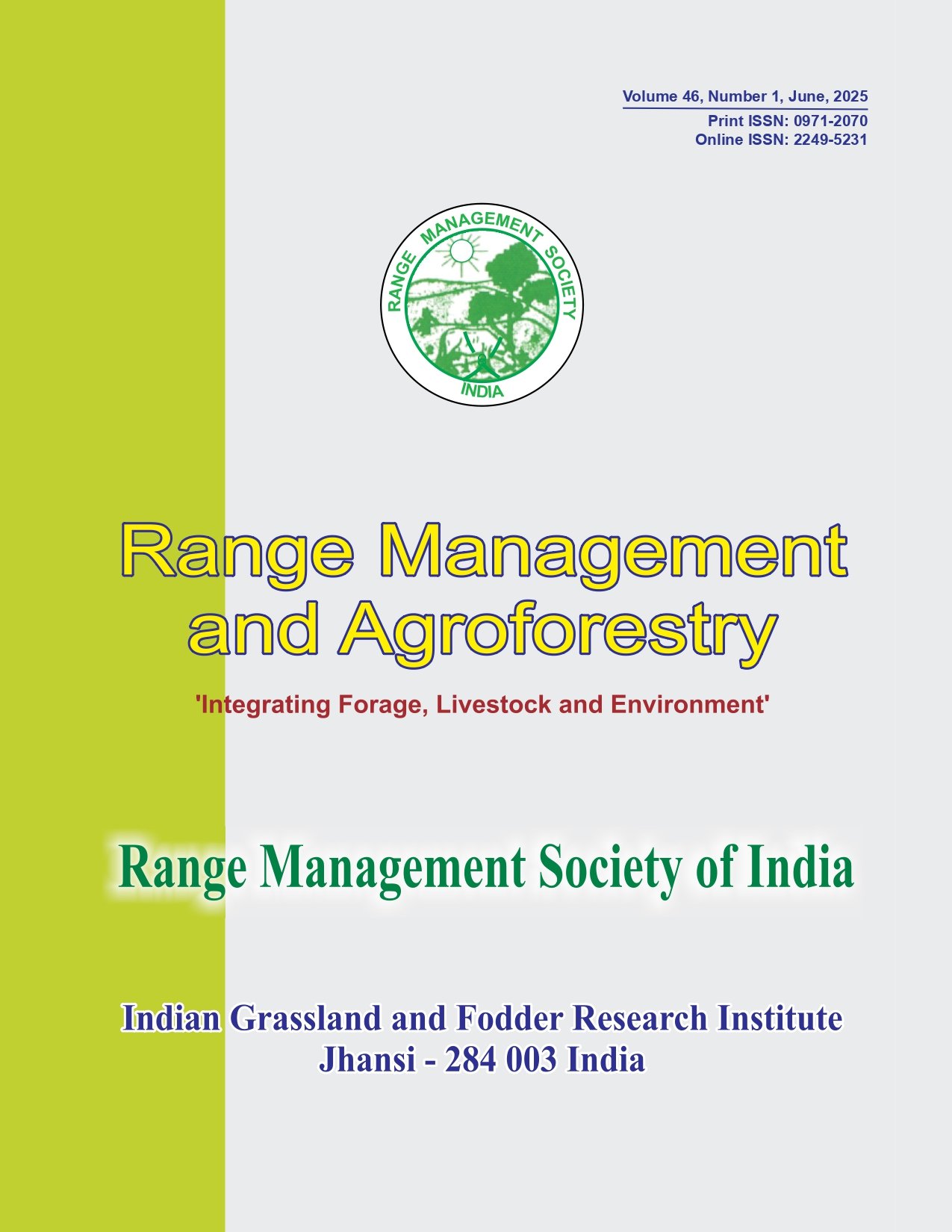Enhancing productivity, profitability and land use efficiency of fodder oats (Avena sativa L.) and berseem (Trifolium alexandrinum L.) by intercropping
DOI:
https://doi.org/10.59515/rma.2024.v45.i1.15Keywords:
Aggressivity, B: C ratio, LER, MAI, Nutrient uptake, Oats berseem intercroppingAbstract
A field experiment was conducted during Rabi season of 2020-21 at ICAR-Central Institute for Research on Goats, Makhdoom, to study the effect of different intercropping row ratios on yield, intercropping indices and economics of fodder oats and berseem. The experiment consists of nine treatments viz., sole oats, sole berseem, oats + berseem (1:1 row ratio), oats + berseem (2:1 row ratio), oats + berseem (1:2 row ratio), oats + berseem (2:2 row ratio), oats + berseem (3:1 row ratio), oats + berseem (1:3 row ratio), oats + berseem (3:3 row ratio). The experiment was laid out in a randomized block design with three replications. Results of the study revealed that maximum values of total green fodder yield (66.70 t ha-1), land equivalent ratio (1.32), monetary advantage index (12411), total phosphorus uptake (22.04 kg ha-1), net return (Rs 51307 ha-1) and benefit: cost ratio (2.33) were recorded with 2:1 row ratio of oats + berseem intercropping combination. However, the maximum value of total nitrogen (178.33 kg ha-1) and potassium (208.84 kg ha-1) uptake was recorded by sole cropping of berseem, which was at par with 2:1 row ratio of oats + berseem intercropping combination. It was concluded that two rows oats + one row of berseem (2:1) intercropping combination performed best in terms of yield, land use efficiency and profitability of fodder oats and berseem.








